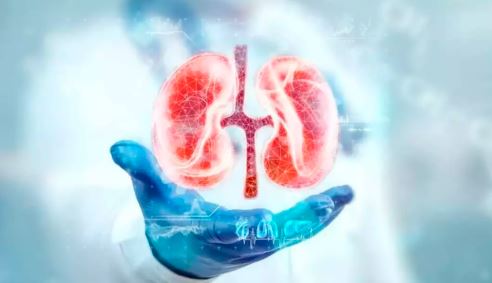
Hypertension, or high blood pressure, is one of the most common chronic health conditions worldwide and a major risk factor for heart disease, stroke, kidney failure, and premature death. While most patients achieve blood pressure control with standard therapy, some continue to have elevated readings despite multiple medications. This condition is known as Resistant Hypertension.
Resistant hypertension is defined as blood pressure that remains above the target level despite the concurrent use of three different classes of antihypertensive drugs, ideally including a diuretic, at optimal doses. It is important because uncontrolled blood pressure significantly increases the risk of cardiovascular and renal complications, and identifying this condition allows for more targeted interventions.
Blood pressure regulation is a complex process involving the heart, blood vessels, kidneys, and nervous system. Key mechanisms include:
Cardiac output: The volume of blood pumped by the heart.
Peripheral vascular resistance: The degree of narrowing or stiffness of blood vessels.
Renal regulation: The kidneys control fluid and salt balance, which directly influence blood pressure.
Hormonal systems: The renin-angiotensin-aldosterone system (RAAS) and sympathetic nervous system play central roles in maintaining blood pressure.
When any of these systems are disrupted or overstimulated, hypertension can develop. In resistant hypertension, these mechanisms often act together or fail to respond adequately to medications.
Resistant hypertension can arise due to several factors:
True resistant hypertension:
Chronic kidney disease (CKD): Impaired kidney function leads to fluid retention and increased vascular resistance.
Primary aldosteronism: Excess production of aldosterone causes sodium retention and potassium loss.
Renal artery stenosis: Narrowing of kidney arteries activates the RAAS system.
Obstructive sleep apnea (OSA): Intermittent low oxygen levels increase sympathetic activity.
Endocrine disorders: Conditions like pheochromocytoma or Cushing’s syndrome.
Pseudo-resistant hypertension:
Poor medication adherence.
Incorrect blood pressure measurement technique.
White-coat effect (higher readings in clinical settings).
Lifestyle-related contributors:
Excess salt intake.
Obesity.
High alcohol consumption.
Sedentary lifestyle.
Resistant hypertension often does not cause noticeable symptoms, which is why regular monitoring is critical. However, patients may experience:
Persistent high blood pressure despite treatment.
Headaches, particularly in the morning.
Dizziness or blurred vision.
Shortness of breath with exertion.
Symptoms related to underlying conditions, such as snoring and daytime sleepiness in sleep apnea, or muscle weakness in primary aldosteronism.
Diagnosis requires a systematic approach:
Clinical evaluation:
Detailed medical history, including medication adherence and lifestyle factors.
Physical examination, including checking for secondary causes such as abdominal bruits (renal artery stenosis).
Blood pressure confirmation:
Home or 24-hour ambulatory blood pressure monitoring to rule out white-coat hypertension.
Laboratory tests:
Kidney function tests (serum creatinine, estimated GFR).
Electrolytes (potassium levels).
Fasting glucose and lipid profile.
Hormonal studies (aldosterone, renin activity, cortisol if indicated).
Imaging:
Renal ultrasound or CT angiography for renal artery stenosis.
Sleep studies for suspected sleep apnea.
Management focuses on optimizing both medical and lifestyle measures:
Medication optimization:
Triple therapy typically includes a diuretic, a calcium channel blocker, and an ACE inhibitor or angiotensin receptor blocker (ARB).
Addition of a mineralocorticoid receptor antagonist (e.g., spironolactone) if uncontrolled.
Consider beta-blockers or vasodilators in select cases.
Lifestyle interventions:
Reducing salt intake (<2 g/day of sodium).
Weight loss through diet and exercise.
Limiting alcohol consumption.
Quitting smoking.
Managing sleep apnea with CPAP (continuous positive airway pressure).
Renal denervation: A catheter-based procedure that reduces sympathetic nerve activity to lower blood pressure.
Baroreceptor activation therapy: Implantable device stimulating carotid baroreceptors to decrease blood pressure.
Angioplasty or stenting: For renal artery stenosis.
Preparation: Patient undergoes imaging to confirm renal artery anatomy.
Procedure:
Performed via femoral artery catheterization.
A catheter delivers radiofrequency energy to ablate sympathetic nerves along the renal arteries.
Duration: Approximately 1–2 hours.
Hospital stay: Usually short, often discharged the next day.
Monitoring of blood pressure at home and during follow-up visits.
Adjustment of antihypertensive medications based on response.
Lifestyle modifications must continue alongside procedural interventions.
Regular evaluation for cardiovascular and renal health.
Potential risks include:
From medications: Electrolyte imbalance, kidney dysfunction, dizziness, or fatigue.
From procedures:
Vascular injury at catheter insertion site.
Renal artery dissection (rare).
Incomplete blood pressure control.
Untreated resistant hypertension can lead to heart attack, stroke, heart failure, and kidney damage.
With proper diagnosis and treatment, many patients can achieve better blood pressure control, reducing their risk of complications. Prognosis depends on underlying causes, adherence to treatment, and presence of coexisting conditions such as diabetes or kidney disease.
Patients should seek medical attention if they:
Have persistently high blood pressure despite taking prescribed medications.
Experience severe headaches, chest pain, shortness of breath, or vision changes.
Have side effects from antihypertensive medications.
Notice symptoms suggestive of sleep apnea (loud snoring, daytime sleepiness).
Resistant hypertension is a challenging but manageable condition. Identifying true resistance, ruling out secondary causes, and optimizing treatment are key steps in care. With the right combination of medical therapy, lifestyle changes, and in some cases, advanced procedures, blood pressure can be controlled, lowering the risk of serious complications. Patients are encouraged to maintain regular follow-up with healthcare professionals for tailored management and long-term health.
Chat With Me